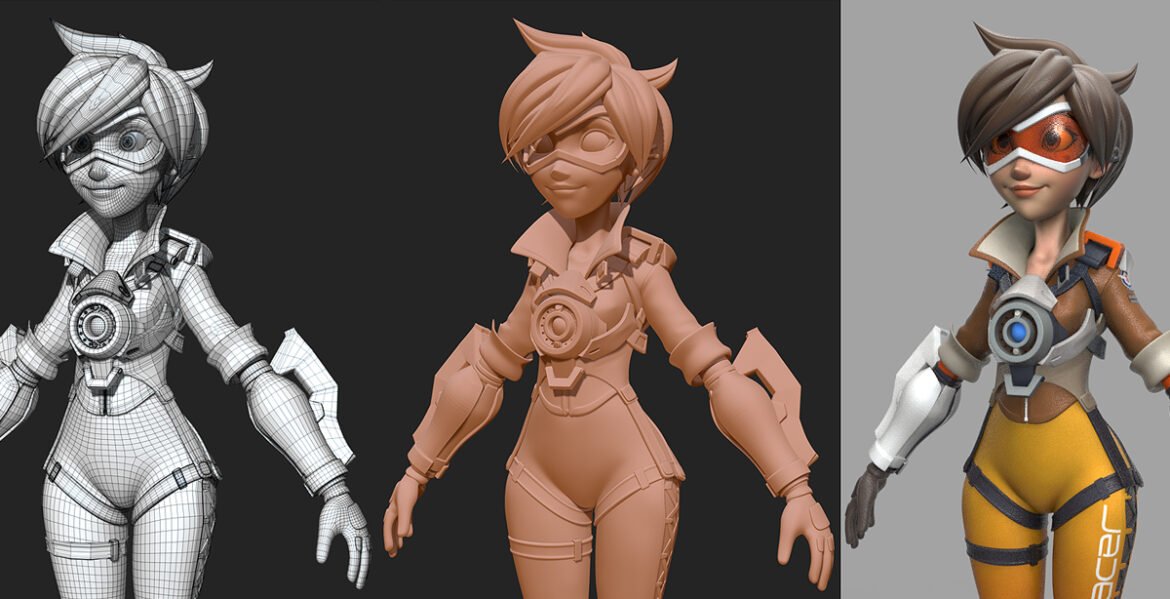Introduction to 3D Character Modeling
M3DSAcademy provides beginners with structured learning to master 3D character modeling, a crucial skill for games, films, and animation. Character modeling involves creating a digital representation of a character, starting from concept to a fully detailed 3D mesh. It requires a balance of technical skills, artistic observation, and understanding anatomy to produce believable and expressive characters.
Understanding Character Design
Before modeling, understanding character design is essential. This includes personality, silhouette, proportions, and style. Strong concepts ensure the final model communicates the intended story or emotion. Beginners at M3DSAcademy learn to analyze references, create sketches, and develop clear design guidelines for modeling.
Base Mesh Creation
A base mesh serves as the foundation for character modeling. It is typically low-poly and defines basic proportions and topology. Proper topology is crucial for animation, rigging, and deformation. Students practice creating base meshes for humans, animals, and stylized characters to establish strong foundations.
Anatomy and Proportion
Accurate anatomy enhances realism and believability. This includes understanding skeletal structure, muscle flow, and joint movement. For stylized characters, proportions may be exaggerated while maintaining balance and readability. M3DSAcademy emphasizes observation and reference analysis to teach anatomy fundamentals.
Sculpting Details
High-resolution sculpting adds realistic features such as facial details, muscle definition, wrinkles, and clothing folds. Students use brushes, dynamic topology, and layers to gradually build detail, maintaining a strong silhouette and overall form.
Retopology and Optimization
After sculpting, retopology converts dense meshes into animation-ready low-poly models. Proper edge flow ensures smooth deformation during rigging and reduces rendering load. Beginners learn retopology techniques to balance detail with performance for games or film pipelines.
UV Mapping for Characters
UV mapping is essential for applying textures accurately. Properly unwrapped UVs prevent stretching and maintain consistent texel density. M3DSAcademy teaches beginners to efficiently create UV maps for both organic and stylized characters, preparing them for texturing.
Texturing and Material Application
Applying textures brings characters to life. PBR materials define color, roughness, metallicity, and normal details. Beginners learn to create realistic skin, clothing, and accessory textures, using reference and layering techniques for depth and authenticity.
Clothing and Accessories
Clothing and accessories enhance character personality and storytelling. Students learn to model and sculpt items like armor, jewelry, or casual clothing, integrating them seamlessly with the base character model while maintaining proper topology and deformation.
Facial Modeling and Expressions
Facial modeling requires attention to anatomy and emotional expression. Beginners practice shaping eyes, mouth, nose, and ears for realism and clarity. Correct topology ensures characters can be rigged for facial animation and lip-syncing.
Character Posing
Posing helps evaluate deformation and silhouette. Beginners practice simple and complex poses to test rig readiness and adjust modeling details. Posing also helps refine proportions and overall appeal of the character.
Hard Surface Elements
Some characters incorporate hard surface elements like armor, weapons, or tech gear. Students learn to combine organic and hard surface modeling techniques while maintaining stylistic consistency and proper integration.
Common Challenges in Character Modeling
Beginners often face issues with anatomy, topology, proportion, and detailing. M3DSAcademy provides strategies for troubleshooting, using references, and iterative practice to refine models effectively.
Exporting and Integration
Character models must be export-ready for rigging, animation, or game engines. Beginners learn to optimize geometry, clean meshes, and apply consistent naming conventions for smooth pipeline integration.
Portfolio Development
A strong character modeling portfolio demonstrates versatility, creativity, and technical skill. Students are encouraged to showcase full characters with detailed renders, including multiple angles, close-ups, and stylistic variations.
Practice Projects and Exercises
Hands-on projects reinforce learning. Beginners model simple characters before progressing to complex designs with accessories and expressions. Consistent practice develops confidence and proficiency.
Industry Applications
Character modeling is critical for films, games, VR/AR, animations, and advertising. Understanding professional workflows and standards prepares beginners for careers in digital media and entertainment.
Future Trends in Character Modeling
Advances in AI-assisted modeling, real-time sculpting, and procedural tools are accelerating workflows. Beginners gain exposure to emerging tools while maintaining focus on core artistic and technical principles.
Conclusion
3D character modeling is a foundational skill for creating engaging and expressive digital characters. M3DSAcademy equips beginners with essential knowledge in anatomy, sculpting, topology, texturing, and portfolio development. By mastering these techniques, learners can create professional-quality characters ready for animation, games, and cinematic projects.
This article provides a complete guide to 3D character modeling for beginners, emphasizing practical skills, observation, and workflow integration.

